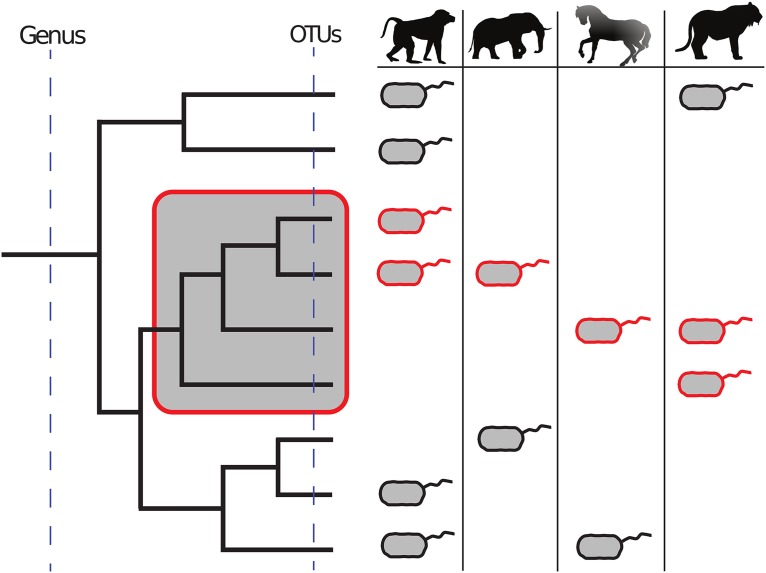FIG 1 .
An ecophylogenetic approach to taxonomy can discover ecologically relevant units of microbial taxa. Incorporating phylogeny into the assessment of how microbial lineages distribute across communities can identify monophyletic clades of microbes that collectively manifest an association with ecologic factors or, as in the case of the present study, with host lineages. For example, the clade highlighted in the red-bounded box is universally present across all mammalian microbiome samples, indicating that the ancestor of the clade may have evolved a conserved trait that facilitated its ubiquitous distribution. Considering this relationship at the OTU level (i.e., considering the tips of the tree to be appropriate units) may fail to resolve an association between taxa and their hosts because any member of this clade may possess the trait necessary to occupy the host niche and, consequently, there may not exist clear statistical associations between mammals and this level of taxonomy. On the other hand, if we were to consider the genus level, the aggregation of this clade with other taxonomic groups that do not possess the trait would potentially obscure this relationship.

